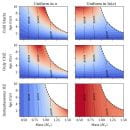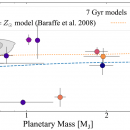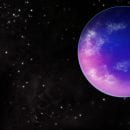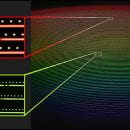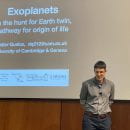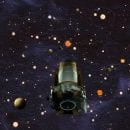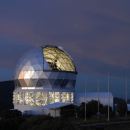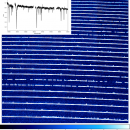Where to search for signs of life
A recent study accepted for publication in the Astrophysical Journal proposes a new strategy for searching for biosignatures, chemical...
Read MoreHPF discovers a Jupiter transiting the cool star TOI-1899
HPF has confirmed the planetary nature of a single-transiting Jupiter-sized planet (1.15 Jupiter radii) orbiting a nearby low mass M dwarf...
Read MoreCEHW Professor Dawson honored with Urey Prize
The Division for Planetary Sciences of the American Astronomical Society is pleased to award the 2020 Harold C. Urey Prize for outstanding...
Read MoreA young sub-Neptune-sized planet sheds light onto how planets form and evolve
UNIVERSITY PARK, Pa. — The detailed characterization of a young planet slightly smaller than Neptune provides insight into how such...
Read MoreNEID Spectrograph Sees First Light
The exoplanet-hunting instrument NEID, designed and built at Penn State, has passed an important milestone on the road to discovering...
Read MoreDidier Queloz Talk on the Hunt for an Earth Twin and the Pathway for the Origin of Life
Professor Didier Queloz (University of Cambridge and University of Geneva) gave an inspiring talk to the Penn State Center for Exoplanets...
Read MoreHow many Earth-size planets are around sun-like stars?
A new study provides the most accurate estimate of the frequency that planets that are similar to Earth in size and in distance from their...
Read MorePenn State set to lead on new exoplanet science priorities
A report by the National Academies of Sciences, Engineering, and Medicine sets the stage for Penn State’s Center for Exoplanets and...
Read MoreFirst Starlight for Habitable Zone Planet Finder
The Habitable zone Planet Finder (HPF) obtained its first observations of stars on 5 November. The figure displays a sample spectrum from...
Read MorePandExo: Online Tool for Simulating JWST & HST Observations of Transiting Exoplanets
We are happy to announce the avaliability of PandExo, an online tool and python package for simulating observations of transiting...
Read More
